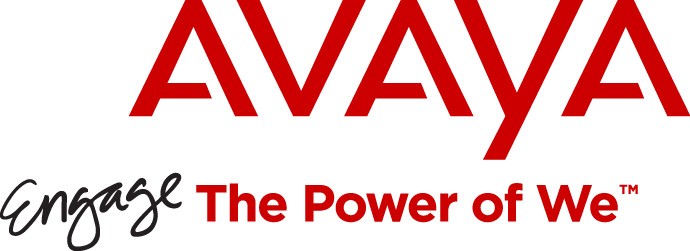● Avaya adds new, next-generation, stackable Ethernet switch that supports new and emerging technologies, unified wired and wireless access and the Internet of Things
● Avaya to create a ‘Smart Foundation’ for smart cities with the help of Avaya’s SDN Fx Networking technology
Avaya today announced an addition to the company’s SDN Fx™ architecture to help bring businesses one step closer to enabling  Unified Access and the Internet of Things – minus the disruption found in many major technology transitions. This launch will enable Avaya to play as a leader in the technology innovation and be uniquely positioned to accommodate Government’s Digital India initiative. The sense of digitization and ‘Smart City’ initiatives is driving Avaya for its new line of next-generation, premium stackable Ethernet switches, the ERS 5900 series, optimized for Avaya Fabric Connect, allows companies to support new and emerging technologies as well as existing ones.
Unified Access and the Internet of Things – minus the disruption found in many major technology transitions. This launch will enable Avaya to play as a leader in the technology innovation and be uniquely positioned to accommodate Government’s Digital India initiative. The sense of digitization and ‘Smart City’ initiatives is driving Avaya for its new line of next-generation, premium stackable Ethernet switches, the ERS 5900 series, optimized for Avaya Fabric Connect, allows companies to support new and emerging technologies as well as existing ones.
According to a recent global Avaya survey, 88 percent of respondents expect to put SDN into production at some point in the future, with the average timeline of approximately 1.6 years. Nearly 45 percent of respondents didn’t have a specific timeframe for deployment; however, 89 percent of C-level executives said that SDN deployment needs to be simple for them to consider adoption. While in India 64 percent of IT professionals want SDN to extend beyond the data center; however, 26 percent of them say the ability to do so today is extremely or moderately limited. In addition, of the challenges that IT pros are looking to SDN to solve, 80 percent insist that SDN programming must be simple before they will adopt.
Read the Blog: To India Railways with Passion
The Avaya SDN Fx architecture is the first to deliver automation and programmability from the network core to the user edge, providing “connect anything, anywhere” simplicity. An ideal foundation on which to build Internet of Everything strategies, this extensibility makes it much easier to accommodate and configure the escalating number of intelligent devices and users at the edge that need to be connected. In order to build a smart infrastructure the Avaya SDN Fx help in achieving digital inclusion efficient networking technology for the nation.
The Avaya ERS 5900 series of premium, stackable Ethernet switches takes another significant step toward full network automation by further extending Avaya Fabric Connect capabilities to the network edge. The ERS 5900 series enables enterprises to smoothly migrate to next generation architectures that unify the wired and wireless network while preparing organizations to adopt new Internet of Things strategies. Key features of the ERS 5900 series include:
Supports MACsec for enhanced security
Supports Power over Ethernet Plus (POE+) for 802.11ac deployments
Extensible to support 60W of Power over Ethernet (uPOE) for emerging IoT deployments such as smart lighting, medical systems and high-end video surveillance
Extensible to support the emerging 2.5GE and 5GE standard for 802.11ac Wave 2 deployments, as is the Avaya WLAN 9100 series
Intelligent Lighting Use Case
As part of the drive to implement sustainable, environmentally-conscious business practices, the universal effort to save energy and improve efficiency across facilities is boosted by new opportunities enabled by SDN architectures and IoT. For example, Avaya is collaborating with other companies on an intelligent lighting solution that eliminates the need for businesses to run expensive, separate high-voltage wiring and conduit for lighting. Instead, leveraging Ethernet cabling, Power over Ethernet and LED, lighting becomes one of the many ‘things’ on the network. Sensors in this solution will detect occupancy/vacancy and areas that need more or less lighting for a good user experience. Benefits include lower costs and energy utilization, much easier installation – simply plug and play with Avaya Fabric Connect – and greater visibility and control through detailed analytics capabilities.
Quotes “India is at the epicenter of innovation, digitization of technology is core to the development of the country. Avaya has a significant role in the Digital India initiative, SDN Fx is our core technology that delivers effortless networking infrastructure. The clock is ticking for businesses that want a competitive edge through greater network agility. By some estimates, it’s expected that nearly 25 billion devices will be connected to the network in just four short years. That could mean massive complexity unless a company or organization has implemented a powerful, simplified SDN foundation such as the Avaya’s SDN Fx architecture. The ERS 5900 takes a major step towards delivering the simplicity and transitional ability needed as Unified Access for the Internet of Things moves into full force.”
Priyadarshi Mohapatra, MD, Avaya India and SAARC
“SDN Fx is the foundation that accelerates deployment of smart cities and mobile environments everywhere, and improves performance of customer and team engagement solution that the industry has been demanding.. The ERS 5900 will help them easily bridge their existing operations into their plans for the future, while providing cost savings from more efficient utilization of energy and new security capabilities to help ward off emerging threats to network operations.”
Satish Murthy, Senior Director and Bangalore Site Leader at Avaya
“Indian CIOs are unnecessarily overwhelmed by inefficient networks and are dissatisfied with the disparity between the promised results of new technologies and the reality that most vendors deliver. With SDN Fx, Avaya is providing the simplicity to IT departments in hope for automating the core network and truly unifying applications for wired and wireless users and devices at the network edge. With Avaya’s introduction of the ERS 5900, they continue their momentum started with SDN Fx of driving practical use cases where the user lives.” Zeus Kerravala, principal, ZK Research






